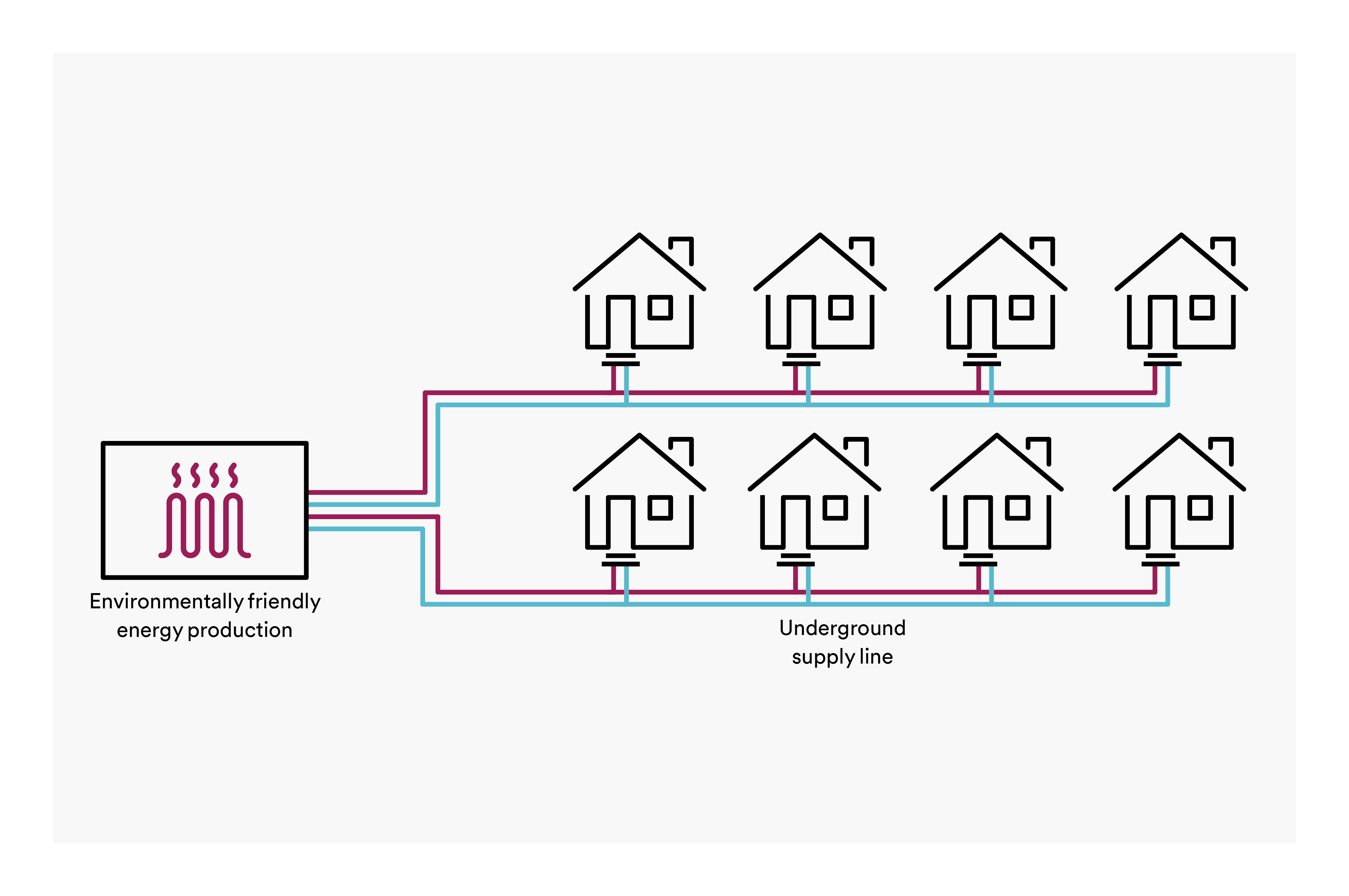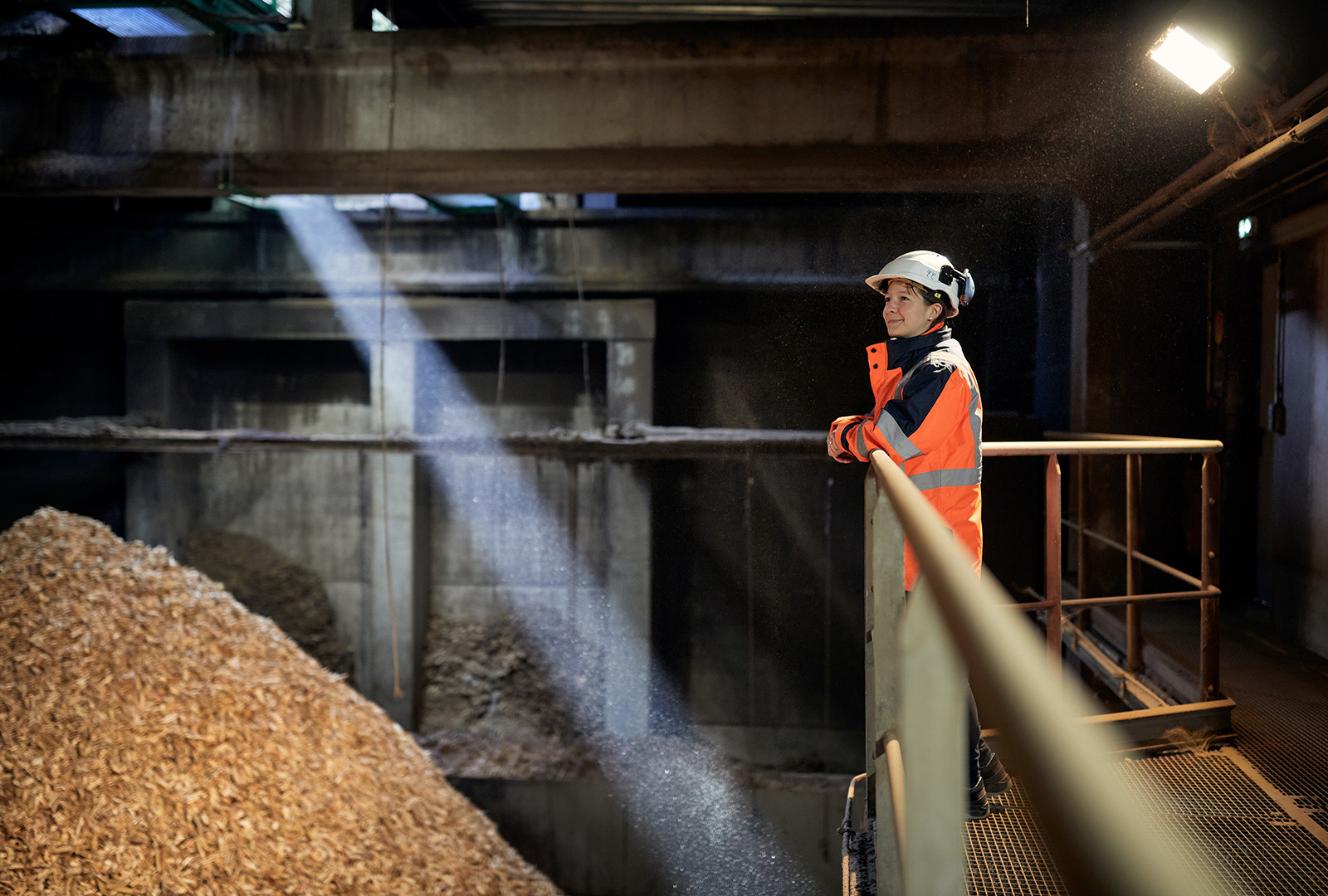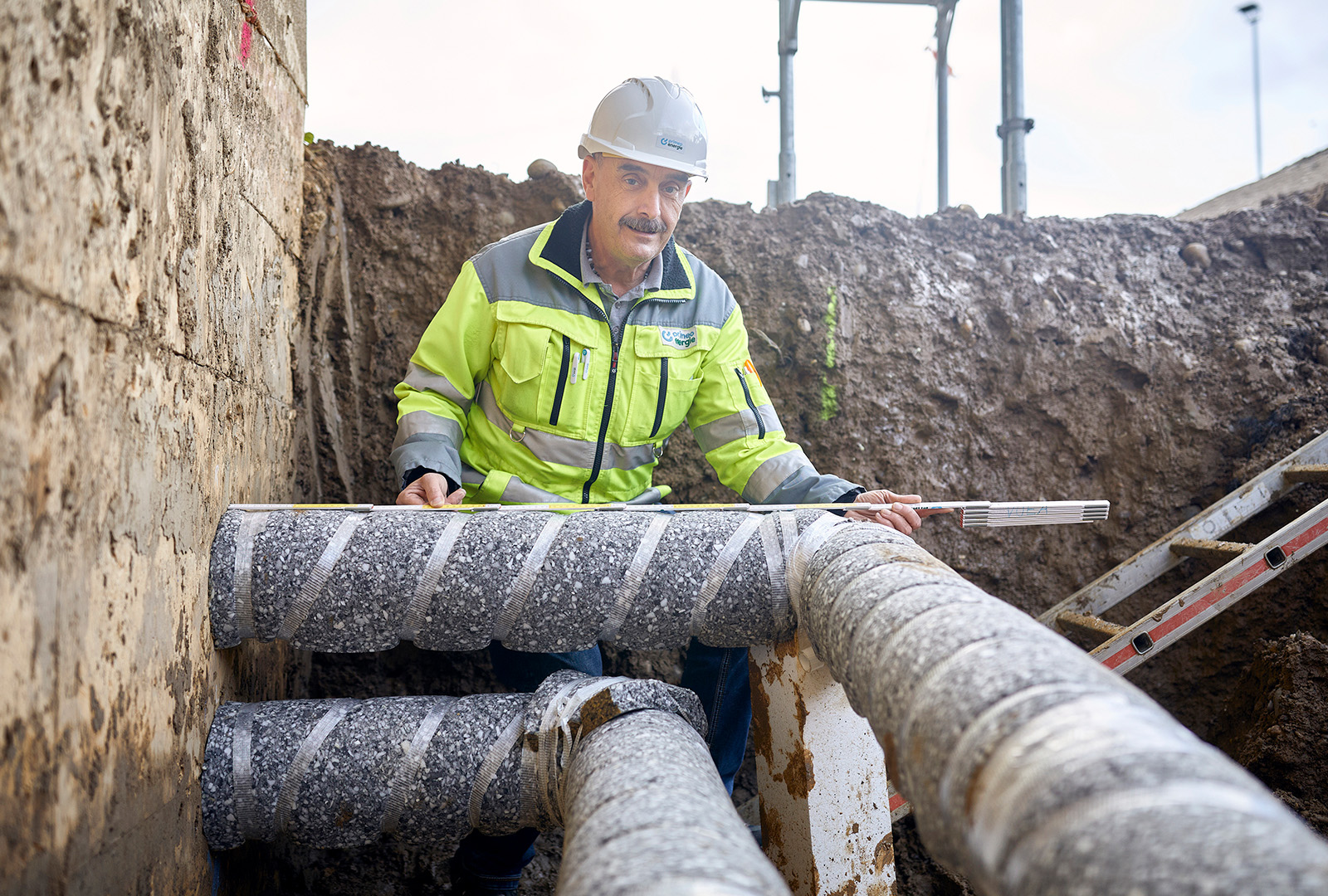A sustainable future with district heating
We plan, build and operate heating networks in Switzerland and neighbouring countries. With over 250 heating systems, we are one of the largest heat supply companies in Switzerland. We have been able to realise heating networks that are among the most innovative of their kind.

How does heating with district heating work?
In a heating network, the heat is generated in a heating centre and distributed to the connected properties in a neighbourhood via underground pipes. This is not only particularly efficient, but also very convenient.
The heat for space heating and domestic hot water is supplied directly to the building; only a transfer station is required on site.

Your advantages with a local heating network
Convenient: reliable operation, long-term protection for more than 30 years, space savings, hardly any effort for operation and maintenance
Economical: favourable heat price, price stability, cantonal subsidies, no additional costs for maintenance
Climate-friendly: 80 per cent of heat from local renewable energies, active contribution to the energy transition
Our heating networks and ongoing projects

For more sustainability in the region
Use of renewable energies: Primeo Energie heating networks use renewable energy sources for the most part. This reduces CO₂ emissions and saves fossil fuels.
Reduction of carbon emissions: Large heating networks generally use better filter and purification systems than small, decentralised heating systems. This reduces pollutant emissions such as particulate matter and nitrogen oxides.
Flexibility of energy sources: District heating systems can draw energy from a variety of sources, including waste heat from industrial processes and waste incineration plants. This contributes to the reduction of waste and the efficient use of existing resources.
Promotion of the regional economy : The construction and operation of district heating systems creates jobs in the region.
